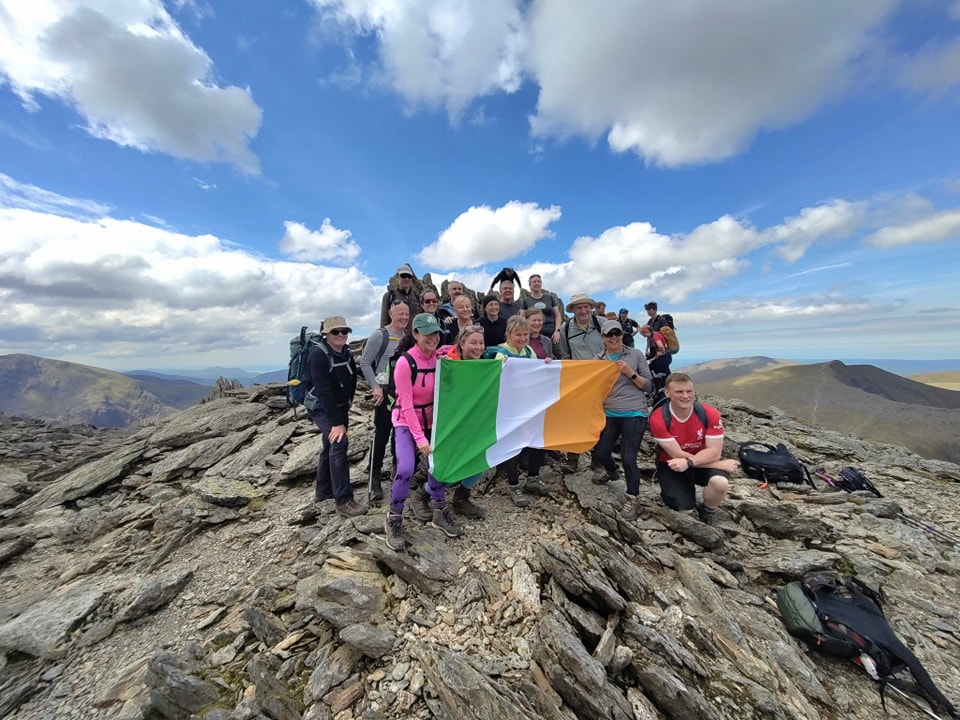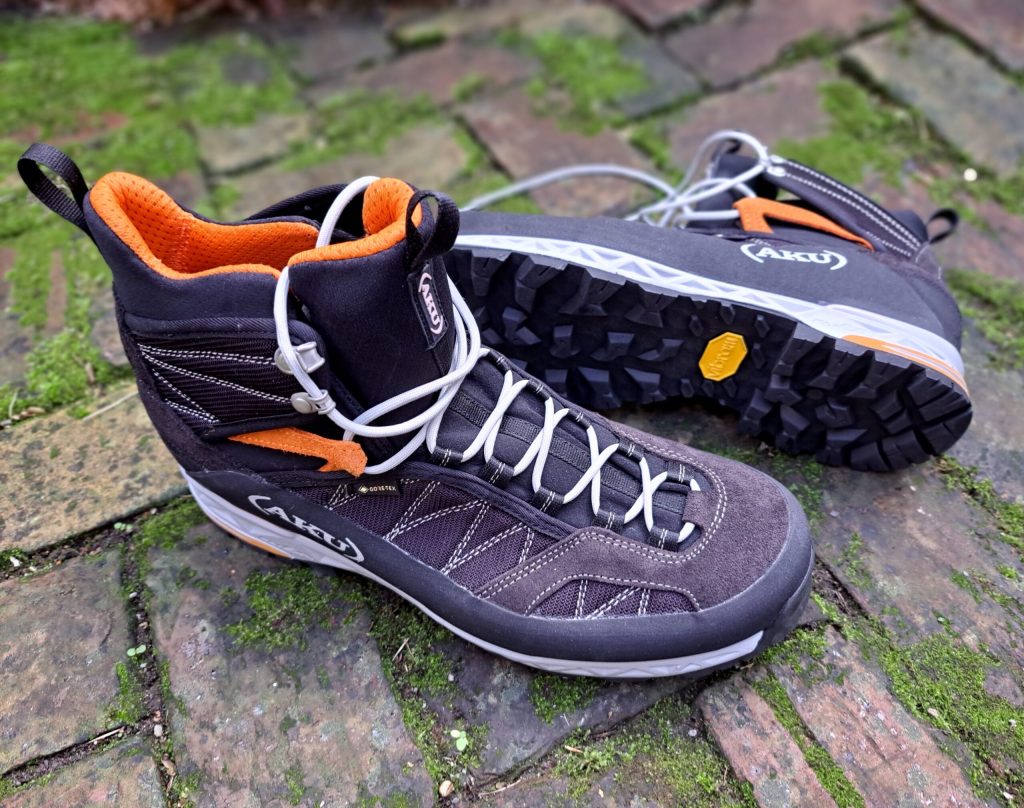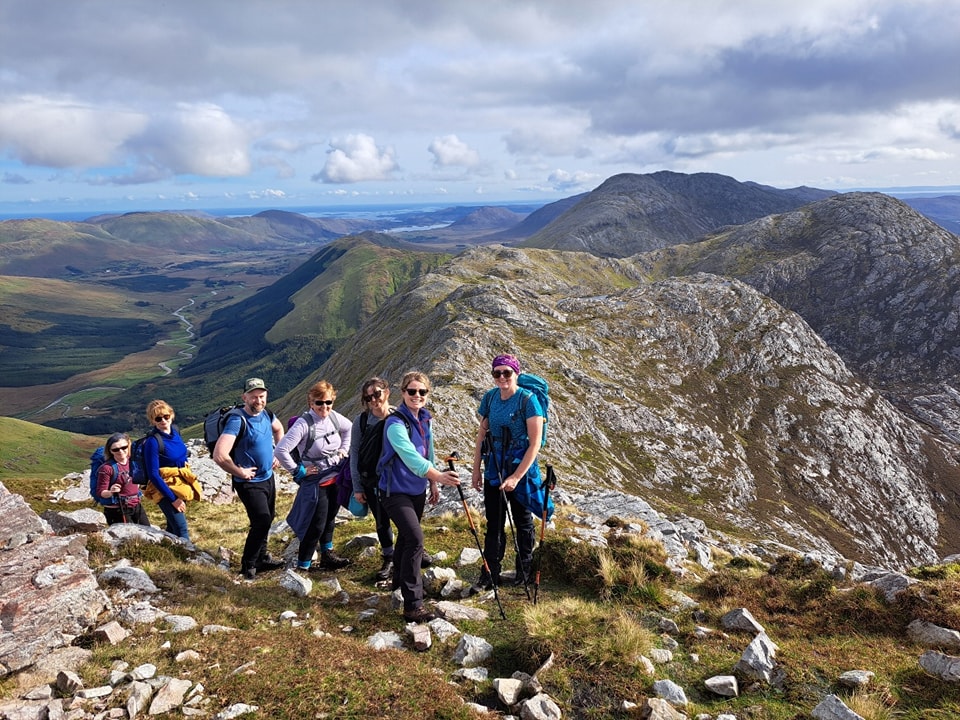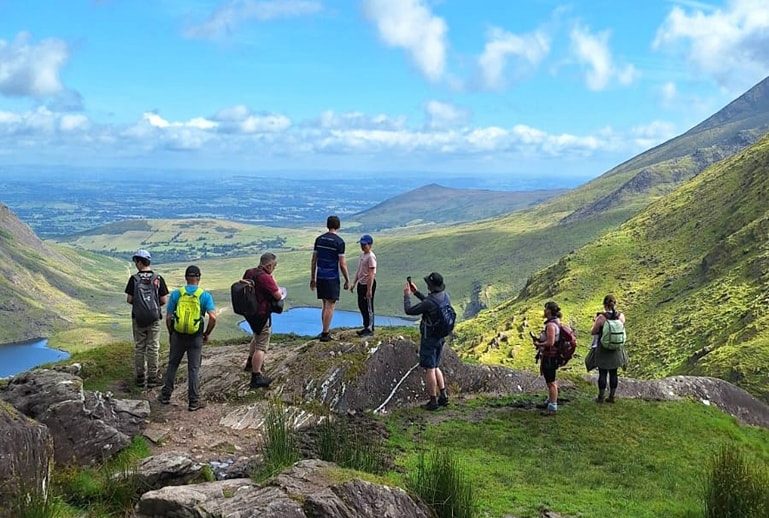10 Top Tips for New Hillwalkers

New to hillwalking? Check out these top tips to start you off in the right direction.
1. Love your feet
Getting the right footwear is possibly the most important factor in determining the success of your hillwalking career.
For tracks and low level routes when you might have only a light pack, then lightweight flexible boots would suffice. More demanding ground, such as rocky, high mountain paths would require a more rigid boot, with a stiffer more aggressive sole for grip and perhaps a higher level of ankle support.
Fabric and leather mix boots are now very popular, they are a good for general hiking use and would be an ideal first boot purchase. These boots combine comfort and lighter weight with a good sole unit for grip; they should also have a waterproof membrane. For rocky mountain trails you will need a more durable boot that has a semi-rigid construction, higher ankle cuff, toe protection and a high grip sole for security on steep ground. These boots were traditionally made of leather, a durable and waterproof material when treated properly; they are now also available with synthetic uppers and a waterproof lining.
This means little if your boots are not comfortable, and getting the right fit is the primary consideration.
Firstly, forget your shoe size, unless you are used to buying hiking boots, it will be of little use to you, get the store to measure your feet to determine the size and width that you need.
Secondly, wear hiking socks when trying on the boots, if you don’t have any the store should give you a choice to try. Once you have the boots on walk around the store, try some stairs if possible, good outlets will have a ramp to walk up and down to check for heel lift and toe squeezing.
Finally, try on several different pairs from different manufacturers, go to other stores if necessary, and get the best fit you can.
Buy some comfortable and cushioning hiking socks while you are there.
You will need to wear your boots in, work up to half day hikes before using them for a full day’s hillwalking.

Choose your footwear with care, and consider what type of hiking you are likely to do.
2. Dress for Success (Think like an Onion)
Layering your clothing gives flexibility and allows for better temperature regulation. Cotton shirts should be avoided as they have poor heat retention when damp. Jeans are definite out, they are heavy, cold and slow to dry when wet, choose trekking or hillwalking trousers instead.
A good layering system should comprise:
Base layer – a good base layer should move moisture away from your skin, it should be comfortable and offer a degree of insulation. The choice is usually between synthetic, (polypropylene or polyester), or wool, (predominantly merino).
Opt for a front zip, as this will help with temperature regulation.
Mid/Insulating layer – this will provide most of the warmth by trapping air in the fibres of the material. Often a synthetic fleece, though wool mid layers are available, they provide insulation while transferring moisture to the outer layer to evaporate.
Outer shell – a jacket with a hood will protect you from wind, rain and snow, and should be both waterproof and breathable. Jackets with full length zips are ideal as they are easier to take on and off
3. Bring the right Gear
Apart from your boots the most important items you buy should be your waterproof jacket and trousers; these are literally a life saver in Irish mountain weather.
Don’t skimp here, get the best you can afford, jackets that use breathable membranes such as Gore-tex or Event work best, other manufacturers have their own brand of breathable materials.
You will also need a hat and gloves, map and compass, a spare warm layer, small first aid kit, headtorch and bivi bag in case of emergency, and a small rucksack of around 25 litres to put it all in.
Some folk like to use walking poles when hiking, but they don’t suit everyone, try to borrow some at first to see if they are for you.
This seems like a lot to buy, but you can compromise on some items and some supermarkets now offer a range of decent budget gear.

Wear the right clothing for the weather
4. Learn to Navigate
It is important for any hillwalker to be able to navigate across open and mountainous country. Most Mountain Rescue call-outs are as a result of poor navigation.
Learn how to use a map and compass, perhaps get a proficient friend to teach you, or better still, enrol on a course, you can find details of Mountaintrails navigation courses on our website.
Many hillwalking clubs will also offer basic navigation courses to their members.
GPS technology is a great navigational aid, but should only be used as a backup to map and compass skills. Batteries fail when they run down or get cold and you may lose the signal in deep valleys and in forests. Smartphone mapping apps using the inbuilt GPS are very popular too, but are notorious for running down the phone battery, and may fail if the unit gets wet.
5. Don’t go it Alone
Heading out alone can seem a daunting prospect, and can be risky. Unless you are experienced and proficient it is best avoided.
Why not join up with a few friends and enjoy those shared experiences, or join a local hillwalking club?
Mountaineering Ireland have a list of all the walking clubs in Ireland, and would be happy to help you find one nearby: [email protected]
Meetup groups are also becoming increasingly popular, and there are bound to be some hillwalking groups in your area.

Joining a guided hike is a great way to start.
6. Stay Fuelled and Hydrated
When we exercise we burn calories, and the same is true of hillwalking, indeed, on a full day hiking in the hills you can burn in excess of 3,000 calories.
Part of the reason we go hiking may be to lose weight, but it is important to have enough energy to get through the day too.
Fuel up at the start of the day. Don’t miss breakfast, and eat complex carbohydrates which release energy slowly, porridge with honey is good, as is muesli with dried fruit and nuts. A cooked breakfast will also give you plenty of fuel for the day, bon appetite!
At your lunch stop refuel with more slow energy release food, oatcakes, bananas and peanut butter sandwiches are all good examples. Chocolate bars and jelly babies make great treats too!
It is essential to drink plenty of fluids, especially in warm weather, dehydration is very debilitating, and can be life threatening. It is generally recommended to drink 2 litres a day, but in reality this varies with individuals, the weather, and the severity of the walk.
Try to avoid caffeine rich drinks, like tea and coffee, as these are diuretic.
For a warming drink in cold weather try hot chocolate, or a fruit tea with a spoonful of honey.

7. One Step at a Time
When you start out, consider your ability level, don’t try to take on too much initially, start small and build it up steadily, gradually increasing the severity of the walks.
Think about the proposed route, and ask yourself these questions, ‘how far is it, how much ascent is involved, how long will it take me, when does it get dark, can I comfortably complete this walk?’ Once you have decided on the hike, leave a plan of your route and the time you expect to return with a friend or family member, so you can be found in an emergency.
8. Be Weather Aware (And other Mountain Hazards)
Mountains have their own weather patterns, you don’t have to be a scientist to know it gets colder as you get higher. In fact it gets colder at an average of 1.5C for every 100 metres of height gain, so if its 10C on the coast it could be below freezing on the summit of Lugnaquilla!
Check the weather forecast and look out particularly for temperature, wind speed and precipitation. A combination of low temperature, rain and wind will produce a wind-chill much cooler than the air temperature, and can lead to hypothermia, so be prepared.
After heavy rain, mountain streams quickly become torrents and become very difficult to cross, avoid crossing water if at all possible, and especially during or immediately after, wet weather.
On a brighter note, don’t forget your sunscreen and a wide brimmed hat in hot sunny weather, and take extra drink too!

Always respect the mountains and the animals and people that live there.
9. Respect the Mountain Environment
The hills and mountains are home to many plants and wild animals, as well as providing a livelihood for many farmers and landowners.
We have a responsibility to protect this environment and to treat it with respect. Avoid harming livestock, wildlife, birds, plants and trees, and leave nothing behind when you leave.
When out hiking with a dog, keep it under control and on a lead when near farm animals and other people.
Remember to act responsibly and ‘Leave No Trace’ of your visit.
10. Remember to Smile (It’s fun after all).
Hillwalking can seem really tough at first, wet cloudy days, long and sweaty climbs, aching limbs and heavy packs. However, the more you walk the easier it gets, and the rewards are many.
Stunning mountain views and wonderful days out you will remember for years to come, increased fitness coupled with a tremendous sense of achievement. All enjoyed in the company of friendly and likeminded people.
